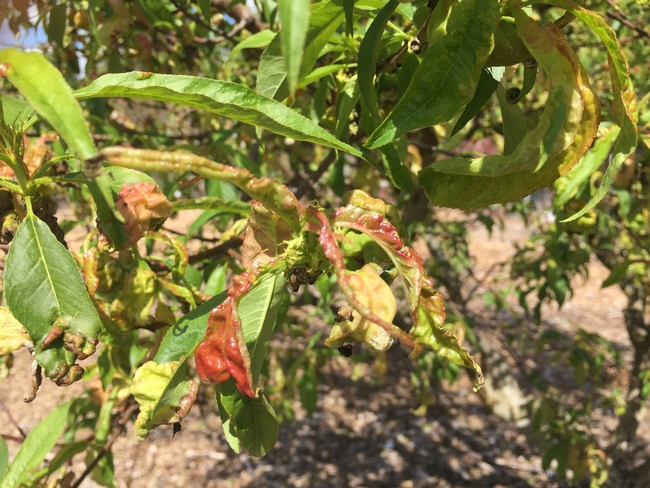Peach leaf curl is a fungal disease that only affects peach and nectarine trees. The fungus causes distorted, reddened leaves to appear on the tree in the spring. While many peach and nectarine trees don't begin to show obvious symptoms of peach leaf curl until the spring, the time to manage the disease is in late fall and winter.

If left untreated for several years, trees can decline and need to be removed. In some cases, peach leaf curl can affect the quality of fruit too.
To effectively control peach leaf curl, spray an appropriate fungicide in the fall or winter, after leaf drop but before flower buds swell in the spring. The fungal spores overwinter on peach and nectarine twigs and flower buds. If left untreated, the spores will germinate in the spring, especially in years with heavy rainfall. In Northern California you can usually treat trees starting in late November. In Southern California you can usually start in early January. A single treatment while the tree is dormant is generally advisable, but in areas that get a lot of rainfall, you may want to spray again later in the dormant season.
Numerous copper-based fungicides are available to effectively treat peach leaf curl when used according to label instructions. Always read the product label before buying or using a pesticide. Use only the rate listed on the label to avoid fungicide resistance and avoid making applications before it rains.
For more management information, see the UC IPM Pest Notes: Peach Leaf Curl and Pesticides: Safe and Effective Use in the Home and Landscape.